Disorders, as we all know, are manifestations of the subtle imbalances and inefficacies that the body is facing. Medical experts point out that most of these disorders do not develop in a day but instead progress gradually over a period of months, or even years, until the onset of clinical symptoms. Thus, it would be right to say that early diagnosis and intervention plays a major role in monitoring and treating the disorders. Listed below are the disorders with their symptoms and causes.
ANEMIA
The purpose of red blood cells in the body is to deliver oxygen from lungs to other parts of the body using a protein called hemoglobin. Anemia is a disorder where the cells do not receive adequate oxygen
from the blood. It is mainly due to not having enough number of red blood cells (RBCs) or sufficient quantity of hemoglobin in the blood. Anemia can result from various conditions which include loss of
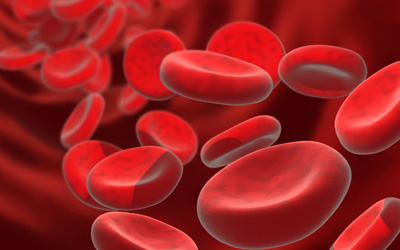 blood because of continuous bleeding, iron deficiency, kidney diseases, stomach ulcers, pregnancy, poor nutrition, abnormally low production of RBCs, excessive destruction of RBCs.
blood because of continuous bleeding, iron deficiency, kidney diseases, stomach ulcers, pregnancy, poor nutrition, abnormally low production of RBCs, excessive destruction of RBCs.
Anemic patients generally experience tiredness and lethargy (a feeling of laziness). It is not uncommon to have their mental state affected as well. Headache, poor concentration, malaise, increased sweating are
some of the symptoms linked to anemia. In some cases, anemia is temporary and caused by nutritional deficiency while in others it may result due to inherited conditions. However, severe anemia can be life threatening.
Vital Tests
- Ferritin
- Iron
- Serum Folic Acid
- Total Iron Binding Capacity
AUTOIMMUNE DISORDERS
A healthy human body has a powerful immune system to resist the invasion of pathogens or micro-organisms.
Unfortunately, sometimes, the immune system wrongly recognises its own cells as foreign and attacks the body itself.
These misdirected immune responses are referred to as autoimmunity which is characterised by the presence of auto antibodies against host-antigens.
 The origin and mechanism of autoimmune diseases is still largely a mystery. Autoimmunity seems to result from the interplay of various influences,
including environmental and genetic factors.
The origin and mechanism of autoimmune diseases is still largely a mystery. Autoimmunity seems to result from the interplay of various influences,
including environmental and genetic factors.
There are many different types of autoimmune disorders. Based on the part of the body affected, autoimmune diseases are classified as organ specific (eg. Type 1 diabetes)
and non-organ specific (e.g. systemic lupus erythematosus). In organ specific diseases, the lesions are restricted to an organ as an antigen present in the organ triggers autoimmunity.
However, in systemic autoimmunity the antigens are ubiquitous.
An autoimmune disorder may result either in the destruction of one or more types of body tissues or changes in the organ functions. Its symptoms may vary depending upon the disease
and location of abnormal immune response. The goal of treatment in autoimmune disorders is to reduce the symptoms by controlling the autoimmune responses and retaining the body's ability to fight diseases.
So far, there is no prevention for most of the autoimmune disorders.
Vital Tests
- Anti Sperm Antibody
- Complement 3
- P-ANCA (C-ANCA)
- Anti-ds DNA
- ANA titre (RIANA)
- ANA screening (SIANA)
CANCER
Cell division is a physiological process that occurs in almost all tissues of the body. Under normal circumstances, there is a balance between cell proliferation and programmed cell death,
which is tightly regulated to ensure the integrity of organs and tissues. Disruption of this physiological process leads to autonomous uncontrolled division of cells in the body called 'Cancer'.
 This uncontrolled cell division in cancer leads to the formation of lumps or masses of tissues called as tumors. Certain types of tumors that do not spread or metastasise and have limited growth are generally
considered to be benign whereas the tumors that proliferate and spread to other systems of the body thereby adversely affecting the body functions are malignant. There are many different types of cancers
and each cancer is classified based on the affected region.
This uncontrolled cell division in cancer leads to the formation of lumps or masses of tissues called as tumors. Certain types of tumors that do not spread or metastasise and have limited growth are generally
considered to be benign whereas the tumors that proliferate and spread to other systems of the body thereby adversely affecting the body functions are malignant. There are many different types of cancers
and each cancer is classified based on the affected region.
Cancer is a rapidly growing challenge to the world. Anyone can get cancer but there are certain risk factors that may make it more likely to happen. Risk factors include smoking, alcohol consumption, previous family
history of cancer, HIV infection, exposure to harmful radiations, asbestos fibers and some hazardous chemicals used in workplace.
The symptoms and treatment of cancer always depends on the type of cancer as well as the stage. The earlier the cancer is diagnosed, the better one's survival rate would be. Today, cancer can be
detected in many ways which include physical examination, screening tests, and medical imaging and nuclear medicine scans.
Vital Tests
- Alpha Feto Protein
- Beta Human Chorionic Gonadotropin
- Thyroglobulin
- CA-125
- CA 15.3
CARDIOVASCULAR DISORDERS
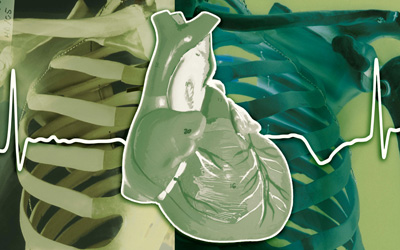 Cardiovascular disease is a class of diseases that involve the heart or blood vessels. Most people think of only middle-aged and old people of being affected by heart diseases.
But nowadays because of the sedentary lifestyle, individuals from any age group are likely to develop cardiac diseases. They have become one of the largest causes of death worldwide.
Age, gender, high blood pressure, high serum cholesterol levels, smoking, alcohol consumption, family history, obesity, lack of physical activity and diabetes are the risk factors associated
with developing cardiovascular diseases.
Cardiovascular disease is a class of diseases that involve the heart or blood vessels. Most people think of only middle-aged and old people of being affected by heart diseases.
But nowadays because of the sedentary lifestyle, individuals from any age group are likely to develop cardiac diseases. They have become one of the largest causes of death worldwide.
Age, gender, high blood pressure, high serum cholesterol levels, smoking, alcohol consumption, family history, obesity, lack of physical activity and diabetes are the risk factors associated
with developing cardiovascular diseases.
Practicing healthy living habits at the early age such as following a routine exercise schedule, going for a brisk walk, refraining from smoking and alcohol consumption, having a healthy diet,
keeping cholesterol levels low and maintaining a correct weight would greatly diminish the risk of cardiovascular diseases.
In general, heart diseases are related to a process called atherosclerosis, a condition that develops when a substance called plaque builds up in the walls of the arteries due to high cholesterol levels.
It narrows the diameter of the artery and obstructs the flow of blood. If there is a clot in the artery, it blocks the blood flow and results in a heart attack or stroke. Some of the other cardiac disorders
are heart failure (failure of heart to pump enough blood to the body), arrhythmia (abnormal rhythm of heart), heart valve problems, etc.
With advances in medical science, today most of the heart diseases are easier to detect and eventually treat. A marked reduction in mortality due to cardiovascular
diseases has been observed in the past few years.
Vital Tests
- Apolipoprotein A
- Apolipoprotein B
- C-Reactive Protein
- Lipoproteins
- Homocysteine
- High-density Lipoprotein (HDL)
- Low-density Lipoprotein (LDL)
DIABETES
Diabetes is not a disease but a disorder, affecting more than 10% of the human population where the body either does not produce adequate insulin or the insulin produced is not properly utilized,
due to which the glucose concentration remains high in the blood stream.
 Like any engine, our body needs fuel to keep it going and this fuel is glucose. Glucose is derived from all sorts of foods that we consume, from chocolates to chicken, from bhelpuri to burger,
food is converted to glucose which is in turn converted to energy for body functioning. After every meal our food is converted into glucose, thereby increasing the blood glucose levels.
The blood glucose levels are controlled by a hormone called insulin. The cells cannot use glucose without the help of insulin. In a normal individual, the body manages to maintain an ideal level of
glucose concentration. But in diabetes, insulin is either not produced or not utilized properly, and hence the glucose remains in the blood causing the condition, "Diabetes".
Like any engine, our body needs fuel to keep it going and this fuel is glucose. Glucose is derived from all sorts of foods that we consume, from chocolates to chicken, from bhelpuri to burger,
food is converted to glucose which is in turn converted to energy for body functioning. After every meal our food is converted into glucose, thereby increasing the blood glucose levels.
The blood glucose levels are controlled by a hormone called insulin. The cells cannot use glucose without the help of insulin. In a normal individual, the body manages to maintain an ideal level of
glucose concentration. But in diabetes, insulin is either not produced or not utilized properly, and hence the glucose remains in the blood causing the condition, "Diabetes".
Vital Tests
- HbA1c
- Insulin
- Lipid Profile
INFERTILITY
 Infertility refers to biological inability of an individual to conceive. There are many possible causes of infertility. Some can be easily diagnosed and treated while others cannot.
Factors that can cause or contribute to infertility are hormonal imbalance, diseases like gonorrhea or chlamydia, use of certain drugs, medical conditions such as diabetes or thyroid diseases,
use of tobacco, marijuana, alcohol and many more.
Infertility refers to biological inability of an individual to conceive. There are many possible causes of infertility. Some can be easily diagnosed and treated while others cannot.
Factors that can cause or contribute to infertility are hormonal imbalance, diseases like gonorrhea or chlamydia, use of certain drugs, medical conditions such as diabetes or thyroid diseases,
use of tobacco, marijuana, alcohol and many more.
The signs of infertility are not the same for all individuals. There are several diagnostic tests that can help detect the condition. Usually, hormonal imbalance is the most common cause of
infertility and it can be detected relatively quickly and easily through testing of blood and urine samples and can be treated by medications or infertility treatments such as ovulation induction
and in vitro fertilization.
Vital Tests
- Estradiol
- Progesterone
- Testosterone
- Luteinising hormone
INFECTIOUS DISEASE
Infectious diseases result due to the presence and growth of microorganisms. There are several infectious diseases that have taken a toll of
many innocent lives in the past and prevail today as well. Despite several intensive efforts, these life threatening infections occur over time because microorganisms are
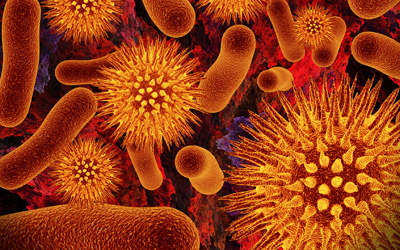 constantly evolving and gaining resistance to the existing medications. Moreover, in a highly populous nation like India where exposure to unhygienic conditions is quite common,
infectious diseases readily spread amongst the population. The problem becomes more serious because many who contract these diseases are unaware without timely diagnosis of the
condition, since these are predominantly asymptomatic.
constantly evolving and gaining resistance to the existing medications. Moreover, in a highly populous nation like India where exposure to unhygienic conditions is quite common,
infectious diseases readily spread amongst the population. The problem becomes more serious because many who contract these diseases are unaware without timely diagnosis of the
condition, since these are predominantly asymptomatic.
There is a plethora of infectious diseases such as hepatitis, HIV, dengue, rubella, leptospirosis, etc. Some infectious diseases can be passed from one person to another.
Some, however, are transmitted via bites from insects or animals. Others are acquired by ingesting contaminated food or water or other agents in the environment.
The signs and symptoms of diseases vary but often include fever or shivering.
Various infectious diseases continue to emerge and re-emerge over time thereby having a profound impact on the economic development. This necessitates the establishment of an effective
public healthcare system to overcome new unexpected infectious diseases.
Vital Tests
- Dengue IgM
- Herpes simplex virus I - IgM
- Leptospira IgM
- Rubella IgG
- Toxoplasma gondii IgG
- Hepatitis B Envelop Antigen
THYROID
Thyroid is a large butterfly shaped gland situated in the front part of the neck, just below the larynx (voice box). Being a ductless gland its hormones are secreted directly into the bloodstream.
Triiodothyroxine (T3) and thyroxine (T4), the two thyroid hormones, help in keeping the body active physically as well as mentally, maintain body temperature and energy levels, fluid balance
and 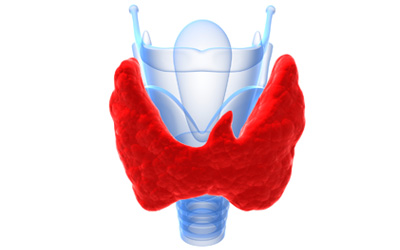 maintain cardiac rate when produced normally. However their production is regulated by another hormone; Thyroid Stimulating Hormone (TSH) secreted by the pituitary gland.
maintain cardiac rate when produced normally. However their production is regulated by another hormone; Thyroid Stimulating Hormone (TSH) secreted by the pituitary gland.
When the thyroid gland does not function properly, it can have an impact on every aspect of our health, and in particular, weight, mental state, and energy levels. Some of the symptoms that
signal the possibility of thyroid problems are obesity, depression, anxiety, hair loss, heart disease, sexual dysfunction and infertility. The symptoms may be mild or often be confused with
other problems which is why many patients remain undiagnosed and untreated for a long time.
Generally, individuals with a family history of thyroid problems, abnormal menstrual history, high cholesterol levels and those who feel exhausted and fatigued or women above 40 years of age
are more likely to have thyroid problems. It is therefore essential to have thyroid function tests done to rule out any possibilities of thyroid abnormalities.
Vital Tests
- Thyroid Stimulating Hormone (TSH)
- Total Triiodothyronine (T3)
- Total Thyroxine (T4)
- Free Triiodothyronine (FT3)
- Free Thyroxine (FT4)
ELEMENTAL PROFILE
TOXIC ELEMENTS:
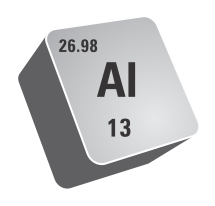
1. Aluminium
Sources : Water, unprocessed foods, pharmaceuticals, abrasives, spark plugs, light bulbs, cosmetics, coloring agents, food additives, medicines like antacids and buffered aspirin, and contamination by aluminium utensils and containers.
Harmful Effects of Aluminium
Inhalation can cause decreased performance, serious lung diseases, concentration problems, cause cognitive impairment, etc.
It is an occupational hazard since long-term inhalation while welding, mining, etc. can increase the risk of cardiovascular diseases, cerebrovascular and dementia of Alzheimer's type.
Toxicity also causes development of bone disorders, including fractures, osteopenia, and osteomalacia.
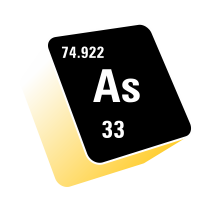
2. Arsenic
Sources : Grains like rice, fruits, vegetables; sea-foods like fish, prawns; meat, poultry, dairy products; smoking tobacco, contaminated ground water, processing of pigments, glass, textiles, metal adhesives, wood preservatives, etc.
Harmful Effects of Arsenic
Arsenic compounds are of two types: Organic and Inorganic. Arsenic at cellular level gets incorporated into the bloodstream, and is taken up by the red and white blood cells.
Organic arsenic compounds are non-carcinogenic and less toxic, compared to inorganic ones, but are equally harmful in its effects as exposure to them leads to nerve injuries and stomach pain.
Inorganic arsenic compounds are highly toxic and its toxicity causes immediate symptoms like vomiting, diarrhea, abdominal cramps, tingling, etc. Long term exposure to its high levels leads to pigmentation changes, hard patches on palms and soles, skin lesions resulting in skin cancer; lung and bladder cancer; growth deformities, diabetes, cardiovascular diseases like atherosclerosis, ischemic heart diseases, hypertension; neurotoxicity, etc.
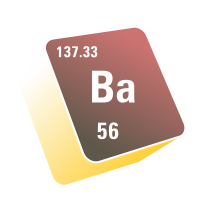
3. Barium
Sources : Air, surface and public water supplies, dust, plants, soil near hazardous waste sites, getters in electronic tubes, paint colorants, rodenticides, X-ray scans, etc.
Harmful Effects of Barium
Water soluble barium compounds are toxic as even at low doses these act as muscle stimulant and at higher doses affect the functioning of nervous system causing weakness, tremors, dyspnea, etc.; immune system, respiratory system as well as eyes, heart, skin.
Though not carcinogenic, short term exposure may lead to diarrhea, breathing difficulties, abdominal cramps, blood pressure abnormalities, etc. Long term exposure can cause baritosis, damages kidneys, reduces body weight and decreases survival.
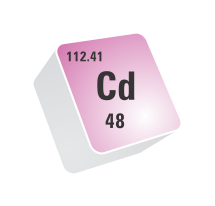
4. Cadmium
Sources : Occupations like mining, smelting; manufacture of zinc, iron and steel; coal combustion, food, water and soil contaminated with phosphate fertilizers; man made sources like plating, plastics, nickel-cadmium (NiCd) batteries and pigments, etc., smoke from burning fossil fuels, cigarettes, municipal wastes, etc.
Harmful Effects of Cadmium
It is one of the most toxic elements to man, which when absorbed, is retained efficiently in the body and accumulates throughout life, primarily in the kidney’s proximal tubular cells. Bone demineralization results either through direct bone damage or indirectly through renal dysfunction.
Excessive industrial exposure to airborne cadmium impairs lung causing bronchiolitis and emphysema, thereby increasing the risk of lung cancer.
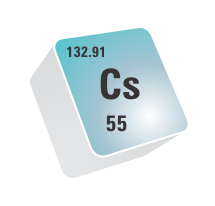
5. Caesium
Sources : Air, drinking water or intake of food containing radioactive or stable caesium near nuclear power plants or oil industries; food sterilizers, sewage sludge, cancer treatment devices, surgical equipment’s, etc.
Harmful Effects of Caesium
Short term exposure to excessive amounts of gamma radiation from radioactive caesium results in vomiting, nausea, diarrhea, coma and even death. Decreased mental and behavioral abilities are observed in unborn babies if exposed to enough radiation prior to birth.
It is chemically similar to potassium, so gets uniformly distributed in the body. Hence, enormous exposure to caesium may cause spasms and hyperirritability, eventually leading to dermal effects like erythema, tissue necrosis; hematological effects like bone marrow aplasia, thrombocytopenia, etc.
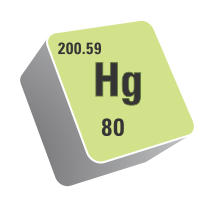
6. Mercury
Sources : Exposure to broken mercury products like thermometers, light bulbs, switches; air, water and soil near hazardous burning wastes, coal-burning power plants, sea-foods like fishes, shellfishes, etc.; pharmaceuticals, dental amalgams, soaps and skin-lightening creams.
Harmful Effects of Mercury
Short term exposure to high levels may result in nausea, headache, sore throat, increase in blood pressure, etc. and since inorganic mercury salts are corrosive to skin, it also affects the eyes, gastrointestinal and kidneys if ingested.
It acts as a neurotoxin once it enters human body, hence long term exposure leads to anorexia, vision and hearing disabilities, neurological and behavioural disorders, such as insomnia, neuromuscular changes, headaches, etc.
Prenatal and infant exposures to elemental mercury or methylmercury harms the child by causing mental retardation, deafness, blindness and cerebral palsy, etc. along with causing cardiovascular and behavioural disorders.
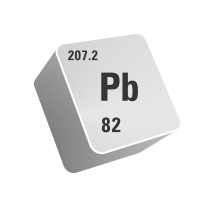
7. Lead
Sources : Drinking water, air and soil due to occupational and environmental exposures near smelters, car exhausts, combustion of leaded fuels; household exposures like lead based paints, toys, furniture, cosmetics, jewelry, batteries, electronics, etc.
Harmful Effects of Lead
When inhaled or ingested, nervous system is the most sensitive target of lead causing neurological effects like encephalopathy and behavioural effects like Attention Deficit Hyperactivity Disorder (ADHD), etc.
Even low concentrations of lead results in permanent damage by reducing intelligence quotient; learning, speech and language impairment and shortens attention span.
High levels affect the whole body by causing anemia as well as affects renal, gastrointestinal, cardiovascular, endocrine and reproductive systems causing chronic interstitial nephritis, immunotoxicity, appendicitis, hypertension, osteoporosis, etc. It also impairs cell growth, maturation, bone and tooth development.

8. Tin
Sources : Air, water and food near manufacturing and industrial facilities, hazardous waste grounds; widespread use of products like dinnerware, canned foods, amalgam fillings, toothpaste, solders, glass coatings, polyvinyl chloride (PVC) heat stabilizers, antifouling paints and pesticides, etc.
Harmful Effects of Tin
Nausea, vomiting, diarrhea, eye and skin irritations, breathlessness, cholangitis of the lower biliary tract, etc. often result upon acute exposure.
Long term exposure results in depression, immune system malfunction, stannosis, hepatotoxicity and neurotoxicity stalling energy metabolism of the body.
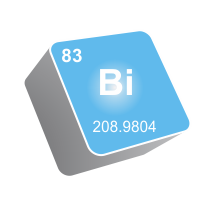
9. Bismuth
Sources : Drinking water, fruits and vegetables, occupational exposure through mining and products like medications, ammunitions, shotgun pellets, cosmetics, solder, synthetic fibers, rubbers, fishing anchors, etc.
Harmful Effects of Bismuth
Acute effects include irritation in eyes and skin, nausea, skin and respiratory infections, constipation, depression, rheumatic pain, ulcerative stomatitis, etc. It also results in formation of bismuth line (black line formed on gums in the mouth) upon bismuth sulphide deposition.
Chronic exposure results in disruption of the functioning of liver, kidneys, bladder; anemia, encephalopathy, nephro- and neurotoxicity, etc. with large doses being fatal to the affected individual.
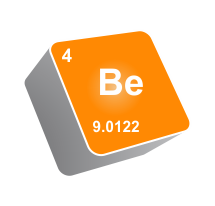
10. Beryllium
Sources : Air, water, soil, fruits and vegetables grown near hazardous waste contaminated areas, industries, manufacturing plants; products like instruments, mirrors, X-ray machines, nuclear weapons and reactors, aircraft and space vehicle structures, etc.
Harmful Effects of Beryllium
Acute exposure of the metal on skin or eyes leads to local irritation and contact dermatitis due to hypersensitivity reactions.
Exposure to dusts and fumes disrupts functioning of nervous and lymphatic systems, and affects internal organs which include liver, kidneys, heart, etc., among which lungs are majorly affected with disorders like acute and chronic beryllium diseases (preventing transfer of oxygen from lungs to blood).
Long term chronic exposure can also lead to lung carcinoma and malignant melanoma.
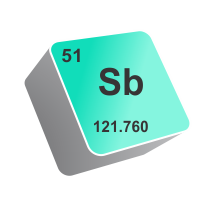
11. Antimony
Sources : Breathing air, drinking water, and foods nearby hazardous waste sites; Occupational exposure due to industries involved in smelting and refining, textiles, dyeing, coal-fired power plants, metal mining, etc.; meats, vegetables, sea-food, tobacco, etc.; Therapeutic exposure due to medications of helminthic and fungal infestations, etc.
Harmful Effects of Antimony
Chronic exposure leads to irritation in lungs, skin, eyes and mucous membrane; depression, headache, vomiting; potentiates lung, gastrointestinal and cardiac diseases;, etc.
Long term exposure results in development of a particular form of pneumoconiosis called antimoniosis, causes alteration in cellular defense mechanisms leading to chromosome damage, reproductive disorders and carcinogenesis.

12. Strontium
Sources : Air, water, soil or dusts near hazardous industrial waste sites, nuclear power plants, fallout from nuclear explosions, etc.; due to fumes of burning coal and oil or coal and incinerator ashes; Fresh leafy vegetables, fishes, livestock, grains, and dairy products, etc.; products like glass and ceramics, paints, fluorescent lights, medicines, etc.
Harmful Effects of Strontium
Excessive exposure may result in abnormal bone development, bone disorders or diseases like osteomalacia, etc.; with radioactive strontium causing anemia, low platelets and white blood cell count and oxygen shortages, and in extremely high concentrations is carcinogenic, mostly leading to bone cancers.
Strontium chromate, one of the most corrosive forms, causes lung carcinoma which is mostly fatal. Prolonged exposure also results in blisters, allergies, damaged kidneys, etc.
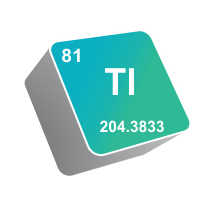
13. Thallium
Sources : Air, water, soil, food near industries dealing with smelting, pyrite burners, cadmium and alloys manufacture ; Products like electronic devices, closures, switches, rodenticides, imitation jewelry, paints, low temperature thermometers, semiconductors; cigarette smoking; heroin or cocaine contamination, etc.
Harmful Effects of Thallium
Thallium, upon exposure, accumulates in the bodily tissues with high potassium concentrations like heart, muscles, central and peripheral nerve tissues; thus affecting the inhibition and stimulation of potassium dependent processes.
Acute exposure results in nausea, abdominal pain, vomiting, bloody stools, abnormal colour vision, reduced visual acuity, pleuritic chest pain, painful sensory neuropathy, etc.
Chronic toxicity leads to depression, lack of appetite, alopecia, vision disturbances, myelin sheath injury, psychosis, and even coma.
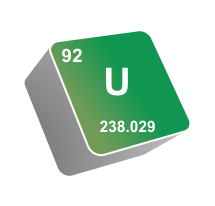
14. Uranium
Sources : Food, air, drinking water, soil near areas of uranium mining, processing, and manufacturing facilities, site remediation activities, nuclear power plants, recycling waste grounds; Root crops like sweet potatoes, turnips, etc.; Products like ballast in aircraft, depleted uranium storage facility, radiation shields in medical equipments, decontamination of vehicles from within or near conflict areas or fumes from an aircraft crash.
Harmful Effects of Uranium
Chemical toxicity results in non-malignant respiratory diseases like fibrosis, emphysema, etc. Nephrotoxicity leads to renal failure since kidneys are the major targets of uranium compounds. Uranium exposure causes birth defects in fetuses and infants as well as increases the risk of leukemia.
Prolonged exposure due to retention of uranium particles in internal organs like kidney and lungs causes irradiation damages, resulting in carcinoma at a later stage.
NUTRIENTS:

15. Cobalt
Sources : Breathing air, eating food, and drinking water containing cobalt and exposure near industries of metal mining, refining, smelting or nuclear facilities and nuclear waste storage sites, etc.; items like alloys, dyes, pigments, magnets, tires, mental-on-hip implants, etc.
Key Biological Role
A component of vitamin B-12 which also aids in red blood cell production by helping in hemoglobin formation
Aids in repair of myelin sheath of nerve cells, assimilation of iron, effective transport of glucose from blood to body cells and production of various co-enzymes in the body
Harmful Effects of Cobalt
Though it is an important nutrient of our body, too much can affect the lungs seriously by causing asthma, pneumonia along with eruption of skin rashes. Cardiomyopathy, tinnitus, blood thickening, thyroid and nerve disorders also result due to cobalt poisoning.
Radioactive cobalt can reduce the white blood cell count, cause blisters or burns on skin, hair loss, temporary sterility, diarrhea, bleeding, vertigo, carcinoma, and even death.

16. Chromium
Sources : Coal and oil combustion, textile industry release, tobacco smoke, industries involved in electroplating, leather tanning, cement production, etc.; chromium dusts, contaminated soil, food, groundwater near chromium waste slag; products like paints/pigments, tattoos, wood preservatives, etc.
Key Biological Role
An essential trace element required to regulate all the metabolic processes of human body like metabolism of carbohydrates, fats and proteins as well as monitoring blood sugar levels, etc..
Harmful Effects of Chromium
Inhalation causes pulmonary effects like asthma, chronic rhinitis, bronchitis, nasal mucosa ulceration, etc.; chromium allergic dermatitis, renal effects including acute tubular necrosis, renal failure, etc.; hepatic effects like liver cells derangement, lymphocytic and histocytic infiltration, etc.
Acute and chronic exposure to hexavalent chromium compounds leads to allergic and eczematous skin reactions, gastroenteritis, cardiovascular conditions like ventricular arrhythmias, etc., thrombocytopenia, anemia, genotoxicity, bronchial carcinomas, etc.
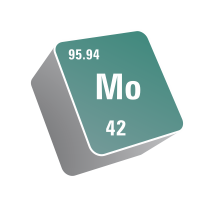
17. Molybdenum
Sources : Occupation exposure through air, soil and water near industrial areas associated with mining, metal production or areas using molybdenum-contaminated fertilizers.
Key Biological Role
This trace element acts as a catalyst, thereby activating major enzymes which aid in metabolism of amino acids, drugs and toxins, and have detoxifying effect on our body, fighting various inflammatory and autoimmune diseases.
Harmful Effects of Molybdenum
Mild molybdenosis results in hyperuricemia, increased blood xanthine oxidase activity, fatigue, anorexia, gout like symptoms such as edema, arthralgia, etc.
Excessive chronic levels results in physiological copper deficiency, gastrointestinal disturbances, anemia, hypothyroidism, liver and kidney abnormalities, toxic encephalopathy, sterility, lung cancer, etc.

18. Silver
Sources: Food, air, soil, drinking water near hazardous waste sites and groundwater resources; medicines, activities such as soldering, photography, jewelry-making, etc.
Key Biological Role
This trace metal is a powerful antibacterial, antiviral, and anti-inflammatory agent which aids in cold and flu prevention, healing of wounds, etc.
Harmful Effects of Silver
Skin contact with silver compounds causes mild allergic reactions like inflammation, rashes, etc. Acute toxicity leads to hemorrhage, pulmonary edema, bone marrow suppression, etc.
Chronic exposure causes argyria characterized by blue-grey discoloration of nails, skin and mucosae. Breathing problems, stomach pain, lung and throat irritation are also observed upon exposure to high levels of silver.
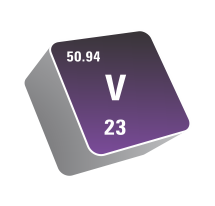
19. Vanadium
Sources : Breathing air, drinking water near waste sites, fuel or coal industries, landfills, etc.; sea-foods, nutritional supplements, products such as high-speed tool steels, catalysts, springs, ceramics, chemicals, superconductive magnets, cigarette smoke.
Key Biological Role
This trace element plays an efficient role in reducing cholesterol production and regulating sugar metabolism maintaining blood sugar balance by mimicking insulin.
It also acts as an enzyme cofactor and plays an important role in hormone, lipid, bone and tooth metabolism.
Harmful Effects of Vanadium
Severe acute toxicity affects circulatory system causing thrombocytosis, myocardial vascular congestion, etc.; nervous system causing necrotic-like cell death, dendritic spines loss, etc.; male infertility, nephrotoxicity, etc.
Nausea, stomach cramps and mild diarrhea result upon inhalation of fumes or dusts of vanadium compounds. Chronic exposure to the fumes may injure the lungs and bronchial airways causing acute chemical pneumonotis, acute tracheobronchitis, etc. and may also lead to occurrence of genotoxic lesions.
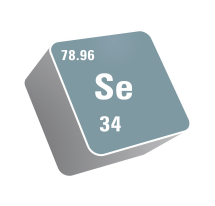
20. Selenium
Sources : Polluted air due to fumes of fossil fuel combustion, drinking water upon leaching of selenium from industries dealing with smelting, mining, etc.; crude oil processing and landfills; Products like paints, plastics, inks, anti-dandruff shampoo, pesticides, nutritional supplements, nutritional feed additive for poultry and livestock, etc.; radioactive selenium in diagnostic medicines.
Key Biological Role
Being a powerful antioxidant and anti-carcinogenic agent, selenium aids in detoxification of the body and protects our internal organs from free radical damage along with vitamin E.
Harmful Effects of Selenium
Acute toxicity results in brittle nails and rapid hair loss, nausea, diarrhea, skin rashes, muscle tenderness, dermatitis, tremors, severe gastrointestinal and neurological symptoms like peripheral neuropathy; cardiac and kidney failure.
Extreme cases of selenosis leads to liver cirrhosis, hepatotoxicity, pulmonary edema, impairment of natural killer cells activity; etc. and even death.
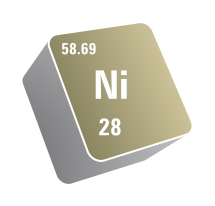
21. Nickel
Sources : Air, food and drinking water contaminated with nickel from hazardous waste sites or industries dealing with plumbing, mining, refining, etc.; smoking tobacco; Products like nickel alloys, batteries, spark plugs, jewelry, electroplating, valves, catalysts, stainless-steel, etc.; ceramic dental fillings.
Key Biological Role
An important trace element found in highest concentrations in nucleic acids, also aids in glucose utilisation by activating certain enzymes and normal bone functioning.
Harmful Effects of Nickel
Acute toxicity results in nickel dermatitis, headache, fatigue, coughing, and diarrhea, immediate and delayed hypersensitivity. Chronic exposure causes inflammation of the liver and brain leading to their degeneration. It also affects the lungs severely by reducing its function, causing chronic bronchitis and pneumoconiosis, which eventually results in cancer of nasal sinus and lungs at later stages.

22. Manganese
Sources : Air, water, soil and drinking water near industries involved with steel, superalloys, stainless steel, cast iron, mining, etc.; fumes from automobile exhausts; tobacco smoke; Products like fireworks, paints, cosmetics, fertilizers, etc.; medical imaging agents used for MRI scans.
Key Biological Role
An essential for proper functioning of nervous system and is found in bones, kidneys, liver and pancreas aiding in body’s metabolic processes
Aids in formation of connective tissues, blood clotting factors, bones and sex hormones
Harmful Effects of Manganese
Excessive levels of manganese causes ‘manganism’ characterised by nervous system effects, behavioral changes and Parkinson like symptoms with tremors, fixed gaze, slowed movement, rigid body, hallucinations, etc.
Chronic exposure leads to irritation of the lungs causing pneumonia, bronchitis, loss of libido, sperm damage, etc. It affects children too causing many undesirable effects in their behavior, brain development, cognitive abilities, etc.
